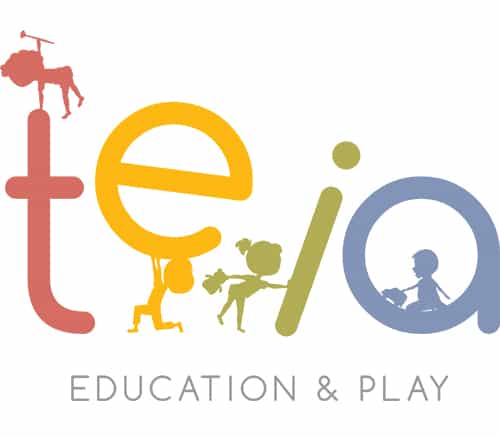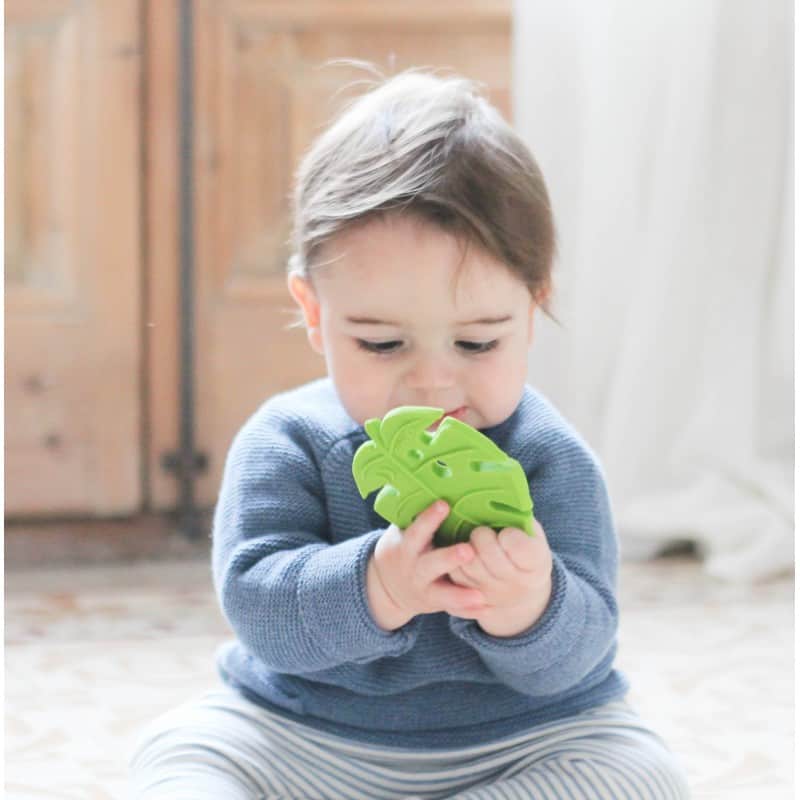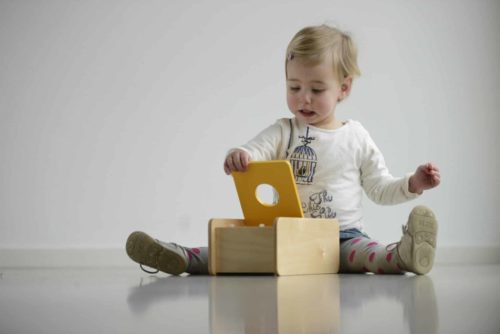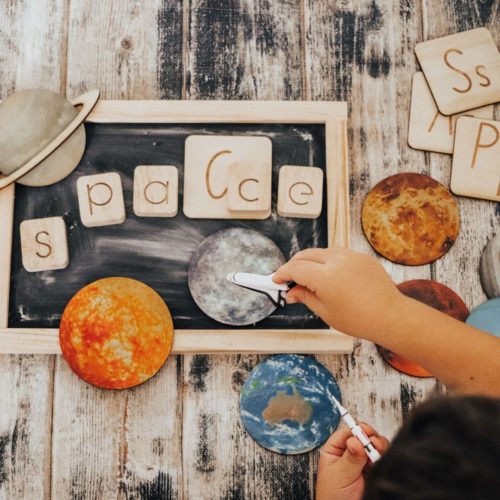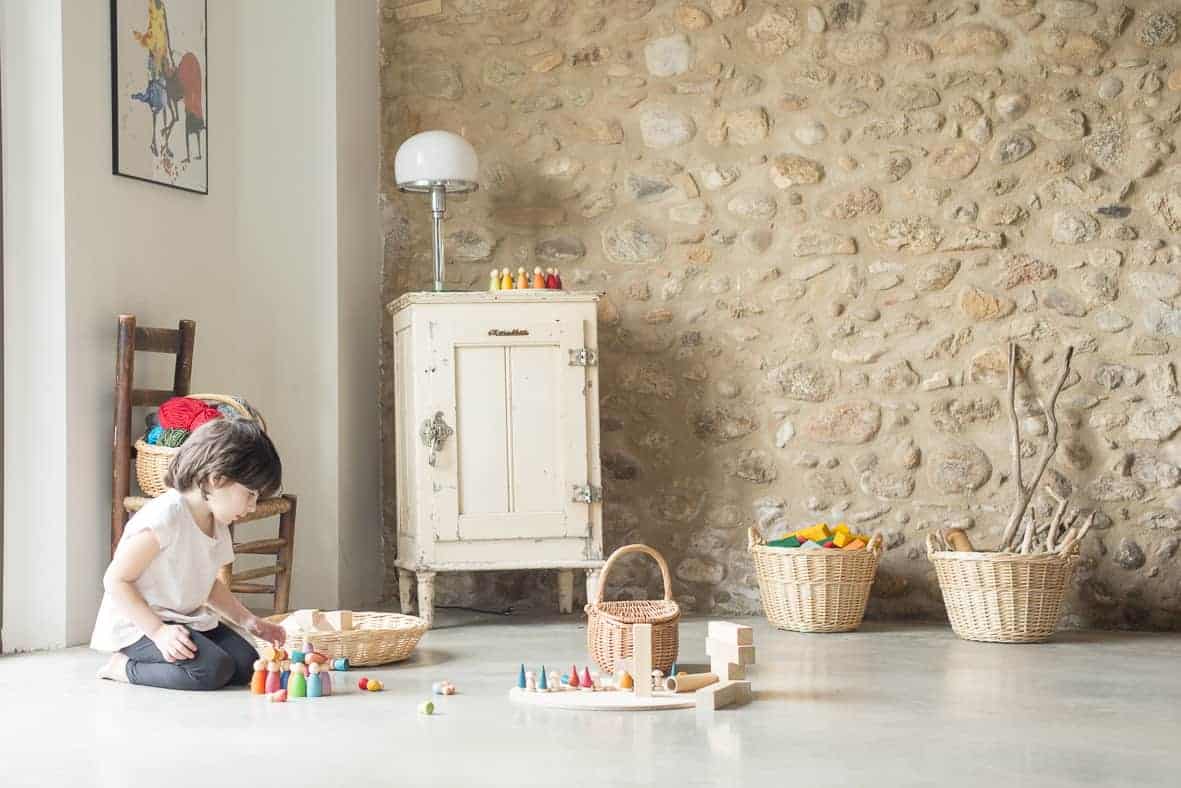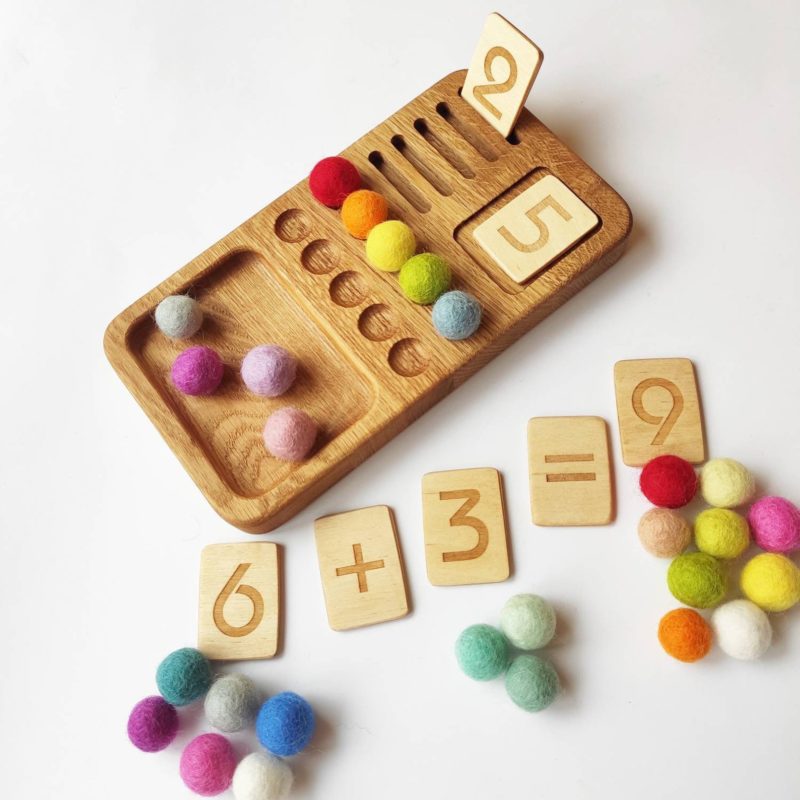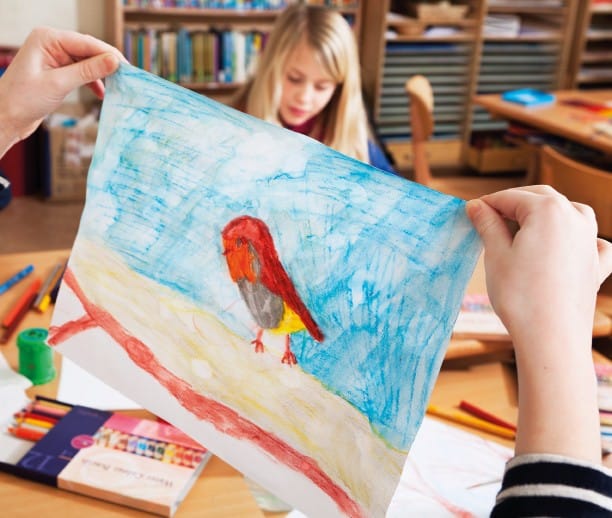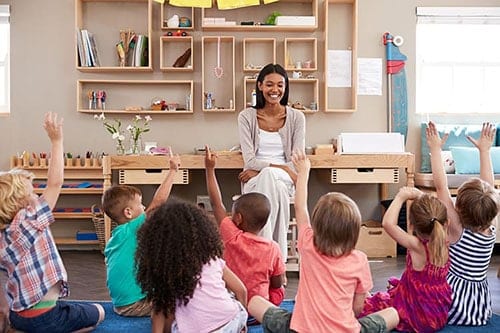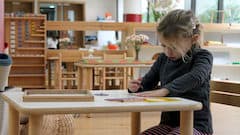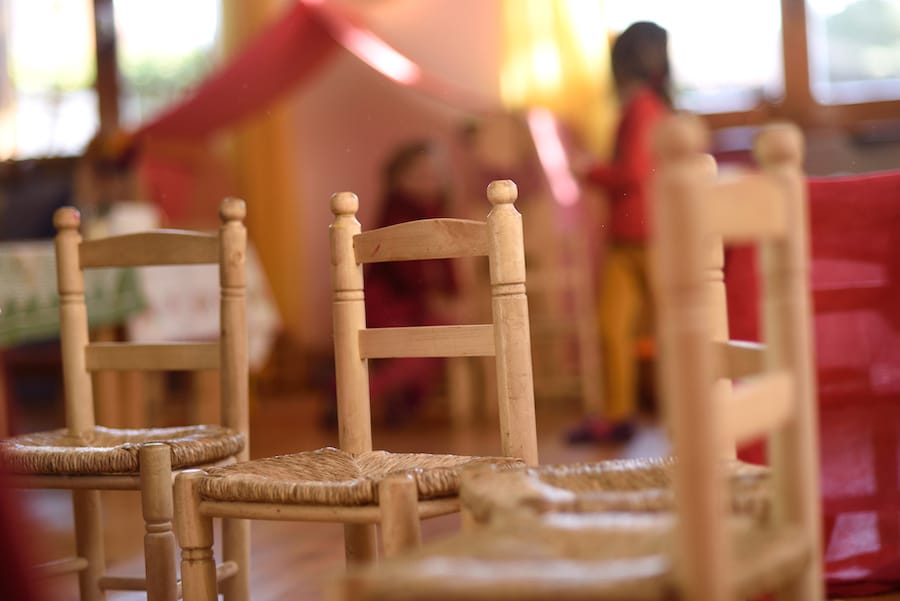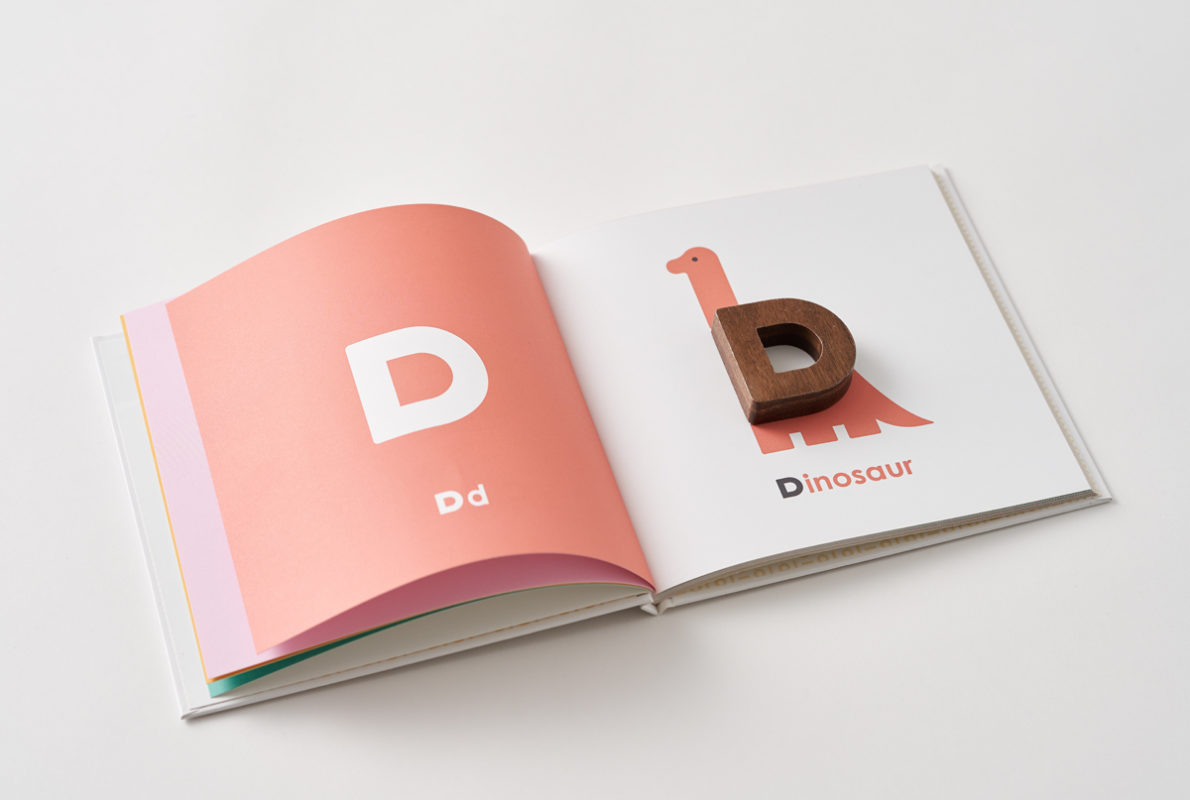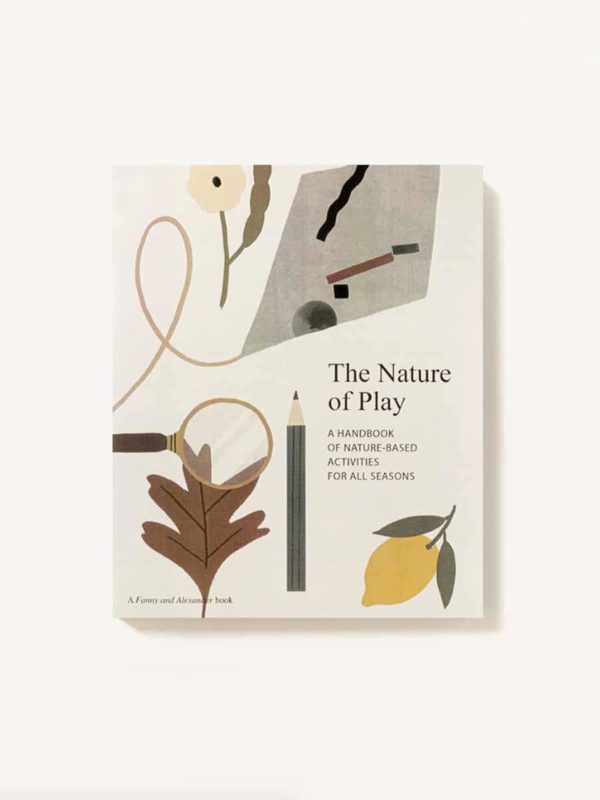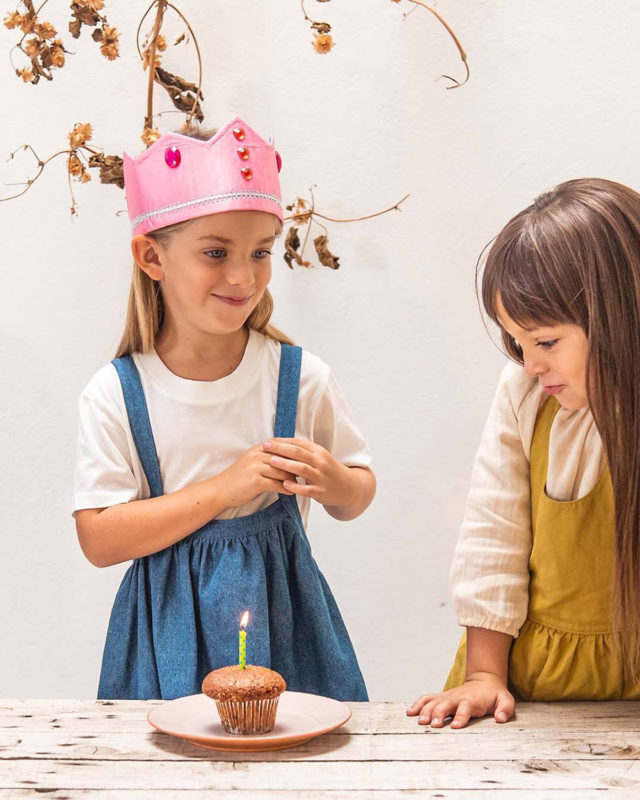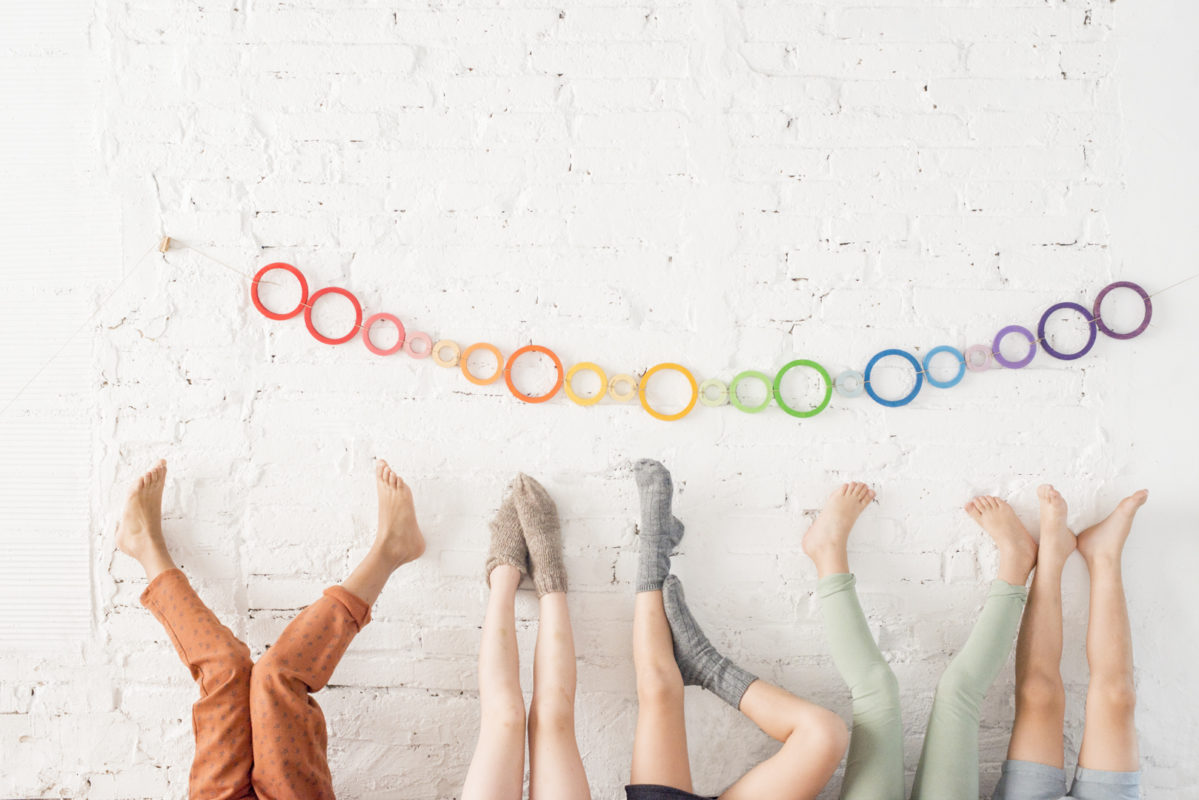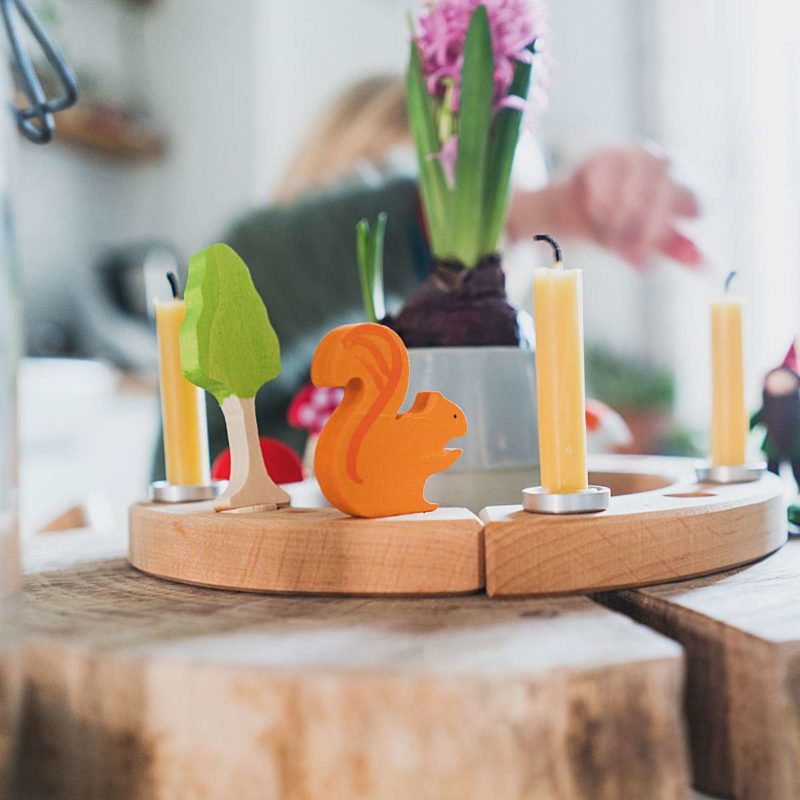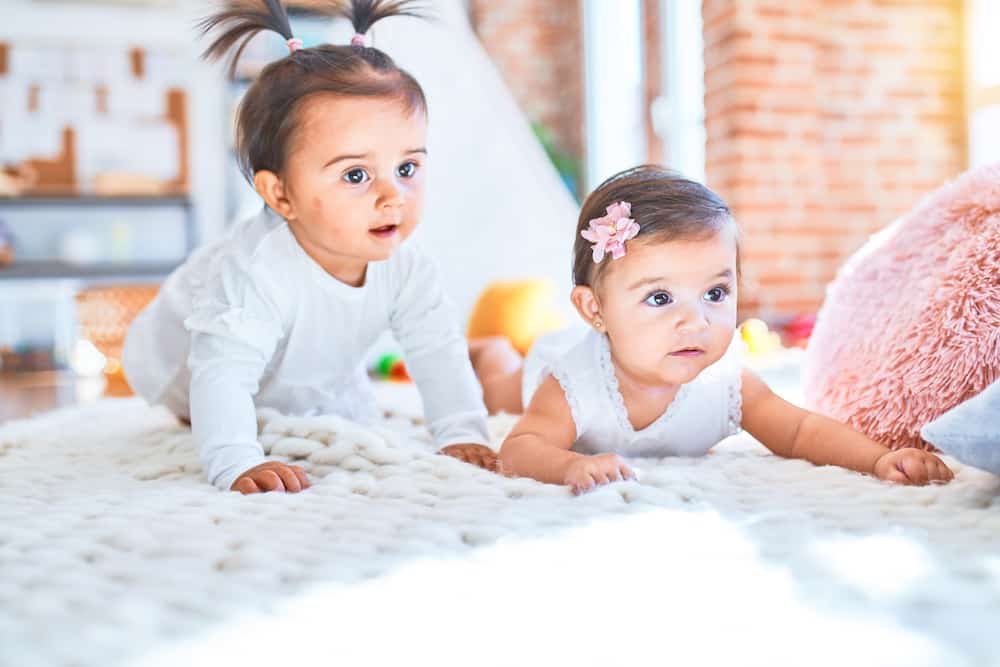Education Methods
How to raise a Montessori baby
How to raise a Montessori baby? As parents, we want our babies to be confident, develop independence and feel supported on their journey. The Montessori approach is a philosophy and way of life that can equip parents to achieve this goal.
Maria Montessori believed that babies and children below the age of three years of age have a ‘sponge-like’ brain, absorbing everything around them subconsciously and as a result, the environment becomes part of who they are from a very early age. So, with this in mind it could certainly be argued that the first three years of a child’s life is potentially the most important developmental period. According to research, over 80% of the brain is formed during this period and lays the foundation for all future learning potential. It is a time when a child is developing their sense of ‘place’ in the world.
There are several ways to implement the Montessori method at home from birth and to raise a Montessori baby, which can actually be very simple however, a large degree of advanced planning before baby arrives is required. Here are some ideas:
Development Centred Nursery
A Montessori nursery is not just about making it attractive and aesthetically pleasing. Keep it simple and uncluttered and not overly stimulating but with enough colour and objects to make it interesting with space for the baby / child to move freely. It is personal choice at the end of the day but, a true Montessori inspired nursery does not have a traditional crib, cot or bed.
Instead, it favours a low-level bed or mattress on the floor without the restrictions of bars or railings. Maria Montessori believed that children thrive when given the freedom to move and explore so the bed should be low enough to the ground for the child to get in and out themselves unaided and safely, as and when they please. This, in time promotes independence, confidence and child empowerment. Other objects of importance within the nursery include:
- An unbreakable mirror on the wall at a low level so the child can observe and entertain themselves.
- A rug, small carpet or play mat which helps to define a specific area for playing and working in.
- A mobile to help stimulate a baby’s sight. In the first few weeks of life, the mobile should be positioned about 10 inches above the baby as this is the extent of their vision at this point.
- Low-level shelving so a child can access their learning resources and toys freely and safely unaided.
- Low-level mounted pictures so they can move to look and observe at any point.
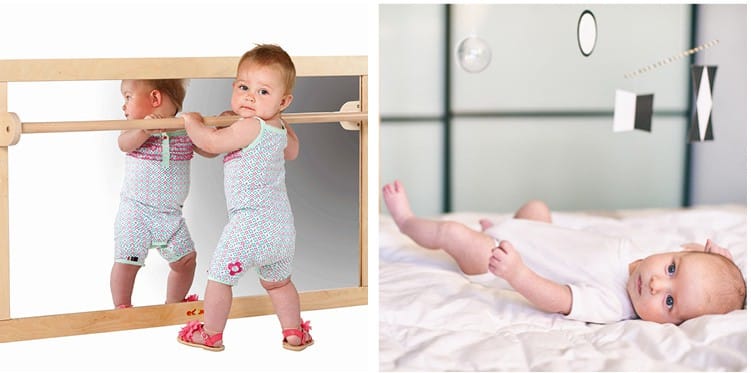
It is important to encourage free movement in a safe, open space from a very early stage – some would say as early as day one back from the hospital, but again it is down to personal choice. Research has proven that children who spend a lot of ‘tummy time’ build stronger neck, shoulder, trunk and arm muscles which helps with the development of fine motor skills and co-ordination. This strength will help to achieve key milestone developmental stages which we will cover a bit later.
Thoughtful Communication
Before a child can communicate in a meaningful and clear way, they learn to make sounds like crying, giggling and blowing bubbles. Language development is as significant as movement and the way we communicate with our baby is massively important because this helps shape the way they communicate with the world and form relationships. It is therefore important to use respectful, rich and clear tones for them to de-code what we are saying.
Long before they can speak, babies learn to understand tonality – for example they can associate voices related to mummy, daddy or a sibling and they can decipher a cross voice compared to a happy voice and so on. Babies are also able to absorb language when a person takes every opportunity to speak to them, reads to them or explain what they are doing or generally communicating verbally. Babies and young children absorb so much activity that it is always good to talk to them in a positive and calm tone about activities and the environment around them.
Independent play
You can play and interact with your baby as often as you like but independent play is another key area of the Montessori approach and how to raise a Montessori baby. According to Simone Davies and Junnifa Uzodike, co authors of the Montessori baby book “the parent’s role is to prepare the environment, not be the entertainer”. Letting your baby explore freely and stepping back encourages confidence, self-reliance, independence, creativity and imagination so it is important for children to learn these from an early stage through the concept of play.
Babies love to be held and carried however, solo play time for a baby allows them to explore their surroundings at their own pace using objects that they choose for themselves, and it also helps them to understand that they do not have to rely solely on someone else for entertainment and stimulation. We all know that babies are individual and develop and different paces so the amount of time that they are able to spend playing independently will vary greatly but little-an-often goes along way.

Understanding sound
Sounds are created everywhere and all around us so it is important to help babies understand where they come from – this can be as simple as showing food jars in the cupboard and giving them a shake or banging a wooden spoon on a saucepan. I particularly remember taking my children round to my parent’s house when they were babies, and my mum would get lots of pans out and turn them over on the floor then provide a large wooden spoon. She would hit the pans just once then they would copy her. The sheer joy on their faces of the sounds they were making, and sense of achievement was just pure entertainment for the adults.
Nature also gives plenty of opportunity to discover sounds – the pitter patter of rain on a window, a thunderstorm, the wind blowing, birds singing and bees buzzing – the list goes on but by talking them through what they hear and see helps to build a connection between the cause and effect.
Key milestones in the first year for a Montessori Baby
Birth to three months
The key areas that a baby is developing, subconsciously from birth, but also in a more practical sense from three months old are:
- Language
- Hand-eye coordination
- Movement
- Aural development
Alongside some of the activities that I have mentioned above, some toys and learning resources that are recommended for this age group are teething toys, infant bells, baby rattles, baby gyms and bead graspers.
Three to six months
At this stage, babies continue to explore using their mouths and tongues but increasingly, they are exploring by touch and sight as their senses continue to develop. Babies enjoy and respond to books from an early age, so it is important to read to them from birth but during this key milestone they are beginning to respond to visual picture books. They also enjoy and respond to the feel of different textures and shapes and continue to strengthen their grip in preparation of being able to grab and hold.
Language forms another key milestone and it is important to continue to involve them in everyday life by talking to them, telling them what is happening and involving them in the world around them.

Babies between six and nine months
From around six to nine months, babies learn to roll, pull themselves along or even start to pull themselves up to a sitting position – some may develop a combination, and having lots of time for ‘free movement’ and opportunities to explore safe, stimulating and interesting objects will encourage this. They are also at a point in time where they can reach for objects, but their grip may not be co-ordinated enough to successfully grab.
During this time, babies also start to communicate verbally through babbling, blowing raspberries and exploring single syllable sounds like d and m. I recall my first child was obsessed with all sounds and words beginning with the letter ‘d’ which provided hours of entertainment!
Babies between nine and twelve months
By the time a baby reaches this next milestone, their hand grasping technique and fine motor skills have really started to develop. They are usually able to hold on to smaller objects and like to pull on objects – for example they will pull the pieces of a puzzle out and often explore them buy putting them in their mouth, but they won’t be interested in putting the pieces back for another six or so months.
Activities that are recommended from six months that will encourage the development of cognitive, verbal communication and fine motor skills include:
- Messy play: water, non-toxic paint or modelling clay.
- Blowing bubbles.
- Tactile play using silks and fabrics.
- Sing-along.
- Outdoor exploring.
Being a Montessori baby is all about learning through play using natural toys and learning materials. Here at Teia Education & Play, we are here to help support you and your child’s learning and playing needs for the first three years of their life with our large selection of natural, sustainable, eco-friendly and toxin-free products suitable from birth. See our 0-3 toys collection here and our range of Nienhuis Montessori materials for infants and toddlers here. Make sure to keep checking back as we are always adding some of the best Montessori toys to the site.
If you are expecting a baby, just became a new parent or are a caregiver looking for guidance to implement the Montessori educational method and to foster a first year defined by love, respect, understanding, and a surprising sense of calm we highly suggest The Montessori Baby book.
